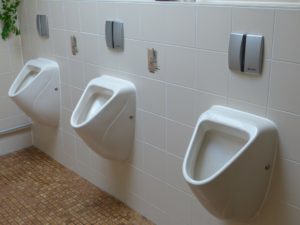 Don’t Be Afraid to Replace Parts Inside Your Toilet or Faucet
Don’t Be Afraid to Replace Parts Inside Your Toilet or Faucet
Taking apart pipes under your sink or shower can lead to messy issues if you make a mistake. However, there’s very little you can damage by trying to replace your toilet’s flapper or your faucet’s cartridge.
Worn flappers are a common cause of leaks between the toilet tank and bowl. And they only cost a few dollars! As a bonus, the package comes with easy-to-follow instructions for replacement.
Most modern faucets can be repaired by replacing the entire interior with a new cartridge. This only requires that you remove a screw or two. So, if you hear the toilet running frequently, or your sink is dripping, get replacement parts and give it a go.
Remove Clogs Without Chemicals
Next time your drain is clearing slowly, don’t buy expensive, chemical drain cleaners. Manually unclog a drain with a drain snake. Just insert into the drain and pull back out with (hopefully) the clog culprit attached. If you don’t have or don’t want to hassle with one, try using a wet/dry shop vacuum to suck out the clog.
Check Your Showerhead for Issues
Thread tape is also one of the easiest ways to fix a dripping showerhead. Chances are, the leak means the threads aren’t connecting tightly. Unscrew the showerhead, apply new tape by wrapping in a clockwise direction, and re-attach to stop the drip.
If the showerhead is clogged, soak it in a bowl with warm water and vinegar for about an hour. Use a small brush to loosen any mineral deposits that could be causing blockages in the spray.
Forget Thread Sealing Compounds, Use Thread Tape
Thread sealing compound, commonly known as “pipe dope,” can drip and smear. For most DIY projects involving pipe threads around the house, thread tape will work just as well or better. You can buy a multi-purpose tape, which is usually white. Thicker tape is usually yellow for gas or pink for water. Try one of the thicker options for easier handling.
When you wrap the tape, roll it counterclockwise around the threads. Can’t get the roll into a tight space? Wrap a few turns of tape around a cheap pen and apply from that. You’ll want to wrap your tape around the pipe threads roughly three times for best results.
Use Heat to Loosen Tough Water Pipe Fittings
Can’t get that trap under the sink or pipe fitting loose, no matter how hard you try with a pipe wrench? Hardened fittings make it nearly impossible to budge the fitting with brute strength.
You might be able to apply heat to loosen up old, solidified pipe dope. A small propane torch will do the trick, but you’ll have to apply heat for a few minutes before much progress can be made. Use heat-resistant material to protect nearby walls.
It may seem obvious, but only heat on metal water pipes, never on or next to gas pipes, and not on plastic pipes or fittings.
Make Your Water Heater More Efficient
Check your water heater’s thermostat to make sure it’s not set too high. You should be able to go down to 115 degrees and still have enough hot water for your needs. You’ll also want to insulate your water heater’s tank. Hot water will stay hot longer this way–but be careful not to cover the thermostat. Some utilities provide inexpensive or free insulating blankets that are simple to install.
You may live in an area where sediment collects quickly in the lines. Sediment can also collect quickly in systems using a well. Get rid of the grit by draining a quart of water from your tank once every 3 months. First, turn off the water heater and open the drain into a steel bowl or bucket. This will remove a lot of the sediment that has settled near the bottom of the tank which can make your water heater run less efficiently.


Recent Comments